Minh Mang Tomb in Hue is one of the significant tourist attractions in Hue, a must-visit destination for travelers exploring the city. When you come here, you will have the opportunity to learn more about the art of tomb architecture and admire the thoughtful selection of locations for the construction of royal tombs by ancient Vietnamese people, which is truly admirable.
This article provides some information about Minh Mang Tomb in Hue, and VnCarRentals.com’s hopes it will be helpful for you in your upcoming exploration of the city of Hue.
Table of Contents
Overview of Minh Mang Tomb
Where is Minh Mang Tomb located?
Minh Mang Tomb, also known as Hieu Lang, is situated on Cam Khe Mountain, where the Huu Trach and Ta Trach rivers converge to form the Perfume River. The tomb is located in Huong Tho Commune, Hue City, approximately 14 km from the city center.
History of Minh Mang Tomb
Emperor Minh Mang, born Nguyen Phuc Dam, was the second son of King Gia Long and the second emperor of the Nguyen Dynasty. Due to his contributions to the nation, he is still regarded by contemporary historians as the most outstanding emperor of the Nguyen rulers, despite some limitations in foreign affairs.
After reigning for 7 years, Emperor Minh Mang initiated the search for a suitable site to begin the construction of his tomb. The graphic designs were approved by the emperor himself and submitted by court officials. In April 1840, he commenced the construction of the tomb. In January 1841, he fell unexpectedly ill and passed away. The incomplete tomb construction was continued under the control of Emperor Thieu Tri. By 1843, when the tomb was completed, the remains of Emperor Minh Mang were interred.
Architecture of Minh Mang Tomb
Minh Mang Tomb is an architectural complex covering approximately 18 hectares, with nearly 40 structures arranged symmetrically. The structures are distributed along three main axes parallel to the Thanh Dao Road.
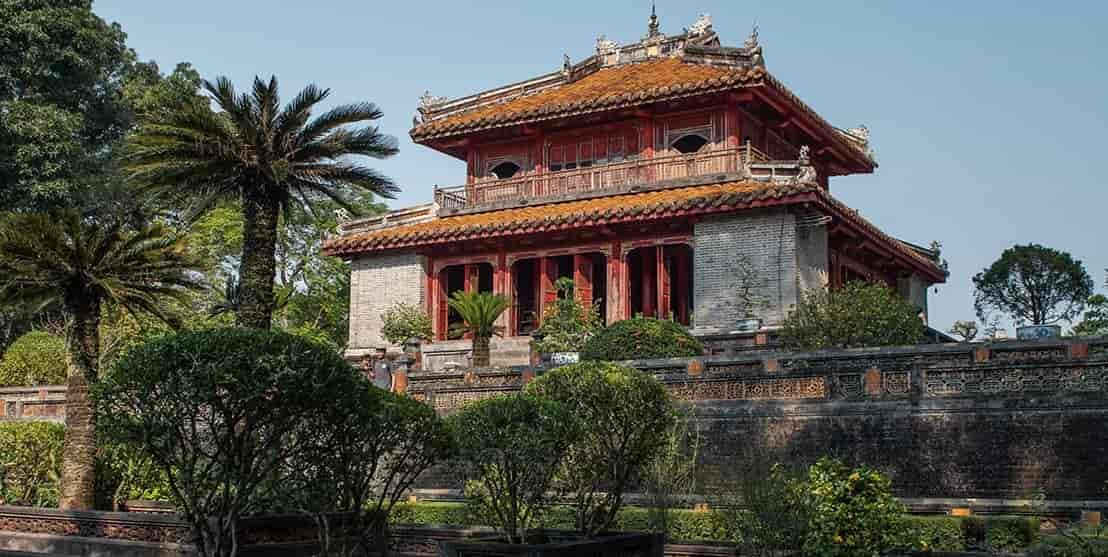
Every aspect of the tomb’s design and construction received careful attention and personal approval from Emperor Minh Mang. As a wise and deeply Confucian monarch with a strong adherence to Neo-Confucianism, the architecture of Minh Mang’s Tomb reflects the distinct characteristics of this emperor.
Ticket Prices and Opening Hours
The admission prices for Minh Mang’s Tomb are as follows:
- Adults: 100,000 VND per visit
- Elderly individuals: 50,000 VND per visit
- Children: 20,000 VND per visit
For further information, please contact the following phone number: 0234 3523 237
Opening hours: 7:00 AM – 5:30 PM, Monday to Sunday.
Therefore, visitors can arrange their time conveniently to explore the tomb of this revered king
Getting to Minh Mang Tomb
The distance from Hue City to Minh Mang’s Tomb is only about 12 km, making it relatively easy for travelers to reach. For domestic tourists, you can fly to Phu Bai Airport in Hue, and for international tourists, you can fly to Da Nang International Airport and then travel to Hue. Once in Hue, you can choose to take a boat on the Perfume River, enjoying the scenery on the way to the tomb area.
Alternatively, travelers can opt for land transportation, such as motorbikes or cars. Starting from Huyen Tran Cong Chua Street, head towards Minh Mang Street, then turn onto Tuan Bridge. Next, take Route 49 and continue straight to reach Minh Mang’s Tomb.
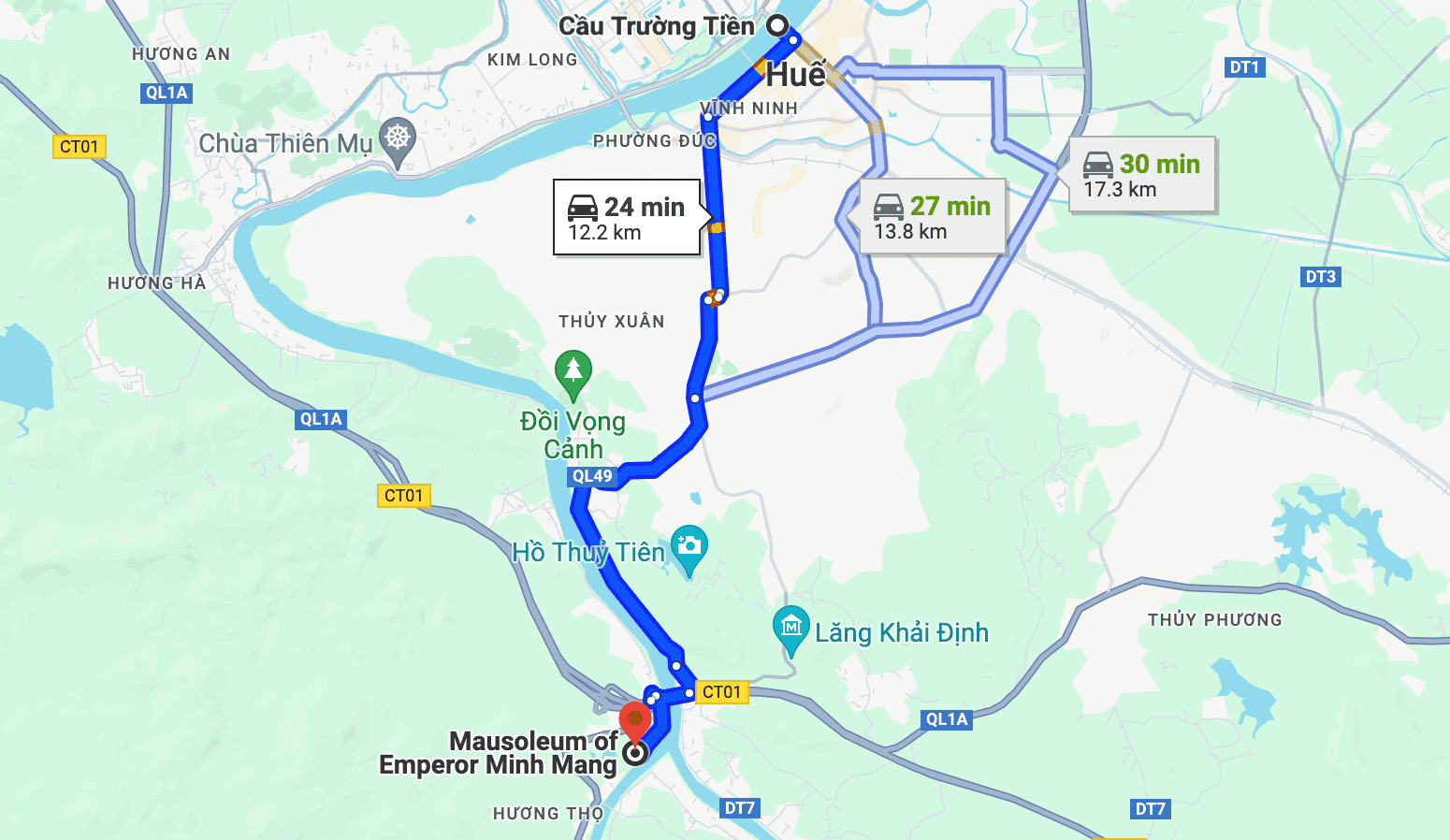
In case you’re not confident in your navigation skills, you can use a map application on your phone or simply ask local residents for directions. Avoid getting lost, as it can consume a lot of time to backtrack.
Moreover, if you are in Da Nang or Hoi An and wish to explore Minh Mang Tomb and other tourist spots in Hue in a day, you can conveniently book the car rental service in Hue from VnCarRentals.com. A day trip from Da Nang to Hue will help you save time, and along the way, you can visit places like Hai Van Pass, Lap An Lagoon, Lang Co Beach, Hue Imperial City, Thien Mu Pagoda, Minh Mang Tomb, Khai Dinh Tomb,…
Structure of Minh Mang Tomb
Large-scale Architectural Design
Initially, Cam Khe Mountain was just a wild, untouched hill, with no existing architectural structures. However, due to the choice of Emperor Minh Mang and the construction of the tomb, this place has been transformed into something entirely different.
Through labor, creativity, and the minds of the craftsmen working on Minh Mang’s Tomb, this area has become a well-known site. It features an imposing, grandiose architectural complex. The tomb is situated on the mountain top, symbolizing the nation’s resilience. Minh Mang’s Tomb not only possesses a harmonious beauty with nature but also holds profound ideological value.
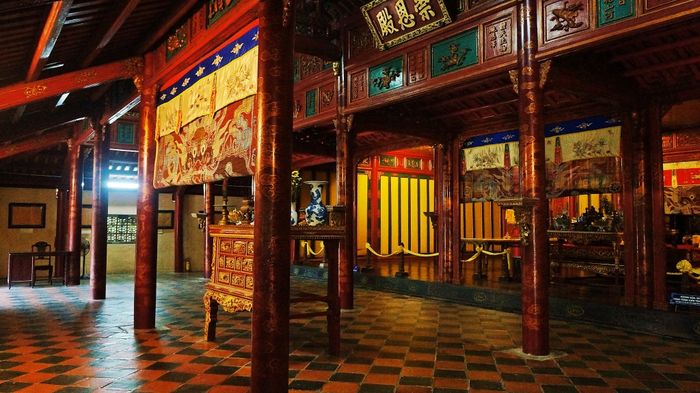
The tomb’s boundary is surrounded by a 1,750m long wall known as the La Wall. Inside is a diverse and rich architectural complex, including castles, palaces, and temples arranged purposefully and scientifically.
Viewed broadly from above, Minh Mang’s Tomb resembles the relaxed posture of a person at rest. This design aligns perfectly with the king’s initial intention of creating a tranquil place to rejuvenate the spirit.
About Feng Shui
In terms of Feng Shui, the tomb’s shape resembles the human body, with the head facing Kim Phung Mountain and the feet pointing toward the confluence of the rivers. The Trung Minh Lake is divided into two parts, resembling the king’s relaxed arms.
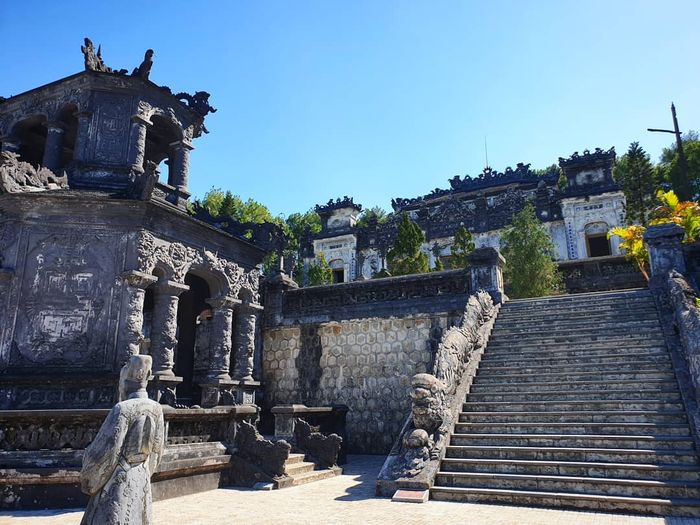
The architectural details of the structures are intricate, with small, fragrant lotus-scented ponds placed between them. The beauty of these elements has been preserved to this day. Placing yourself in this historical site, you will sense the world of the feudal state at that time.
Layout of Minh Mang Tomb
As mentioned, Minh Mang’s Tomb comprises up to 40 different large and small structures, some of which leave a strong impression. They can be categorized as follows:
Dai Hong Mon Gate
This is the main gate to enter the tomb, the first gate visitors encounter when approaching the tomb area. Dai Hong Mon Gate is 9 meters high and 12 meters wide. Every detail is adorned with colorful carvings typical of Nguyen Dynasty architecture.
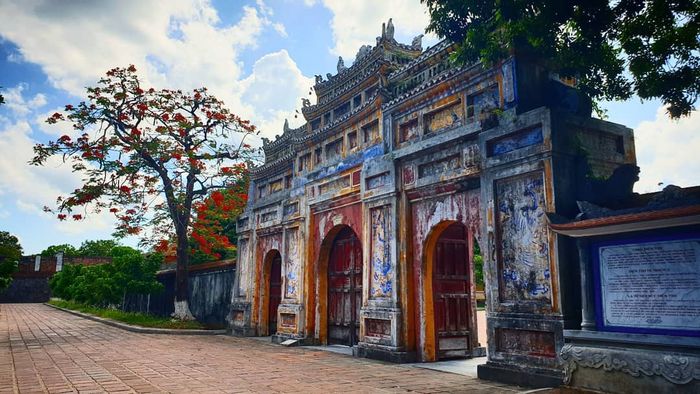
The gate has three main entrances (also called Tam Quan Gate), with two side gates, Tả Hồng Mon and Hữu Hồng Mon. Visitors can only enter through the side gates, while the main gate is reserved for the procession of the king’s coffin.
Bai Dinh Yard
After passing through Dai Hong Mon, Bai Dinh Yard comes into view. The first impression for visitors is awe. A spacious courtyard with two rows of statues of court officials, elephant and horse statues. Despite the long passage of time, these artifacts remain almost intact.
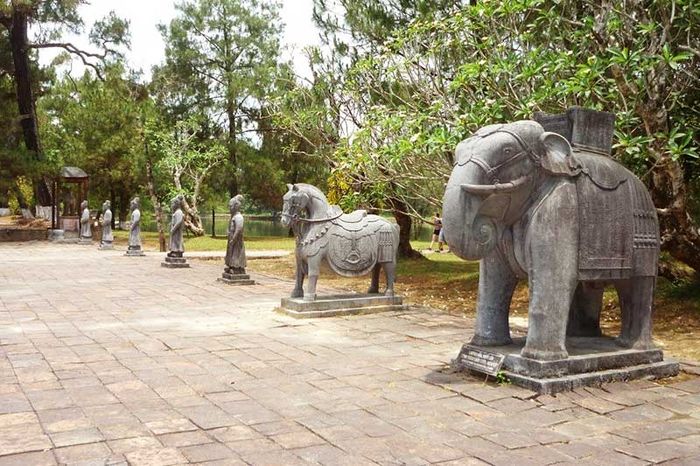
The area is paved with Bat Trang bricks, creating an extremely flat courtyard. The highlight is the “Thanh Duc Than Cong” stele written by Emperor Thieu Tri. The content of this stele is a commemorative inscription, remembering the merits of the king when he was alive.
Tam Dien Area of Minh Mang’s Tomb
When talking about the Tam Dien area of Minh Mang Tomb, Hiển Đức Môn comes to mind. This structure is built on a square piece of land, symbolizing the sacred earth. The design for this tomb area is intricate, with Sung An Temple at its center.
Here, the resting places of the king and queen are arranged in the most revered positions. Stepping into the Tẩm Điện area, visitors will feel a solemn, sacred, and ancient atmosphere, entirely different from the surrounding areas.
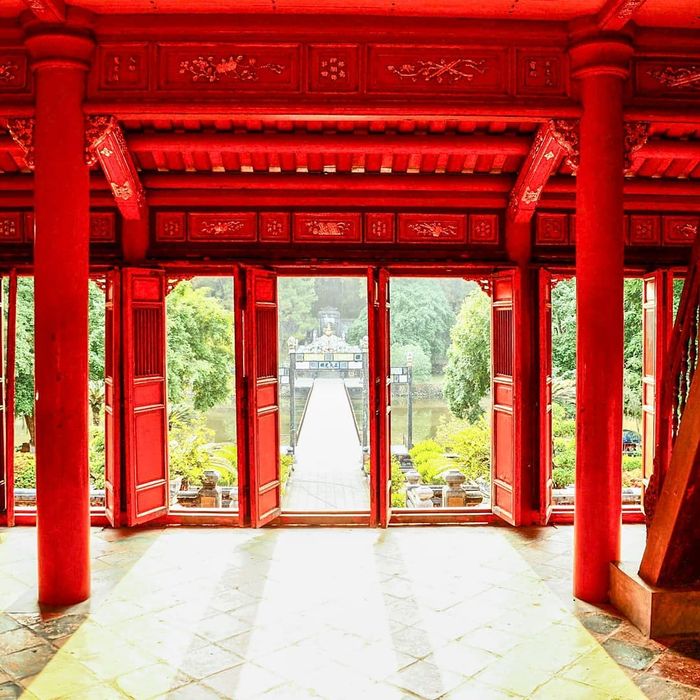
However, the wild beauty of nature still envelops this place. There is the boundless green of the trees, vast expanses of water, interspersed with small lotus ponds. Tẩm Điện has the sound of the wind and the song of birds year-round.
Minh Lau Pavilion
Next is Minh Lau Pavilion, which in Chinese means “bright here.” This is also the first function that Emperor Minh Mang thought of when building the Hieu Minh Tomb area. The pavilion was used for the king to rest, relax, and enjoy life after long hours of meetings with officials.
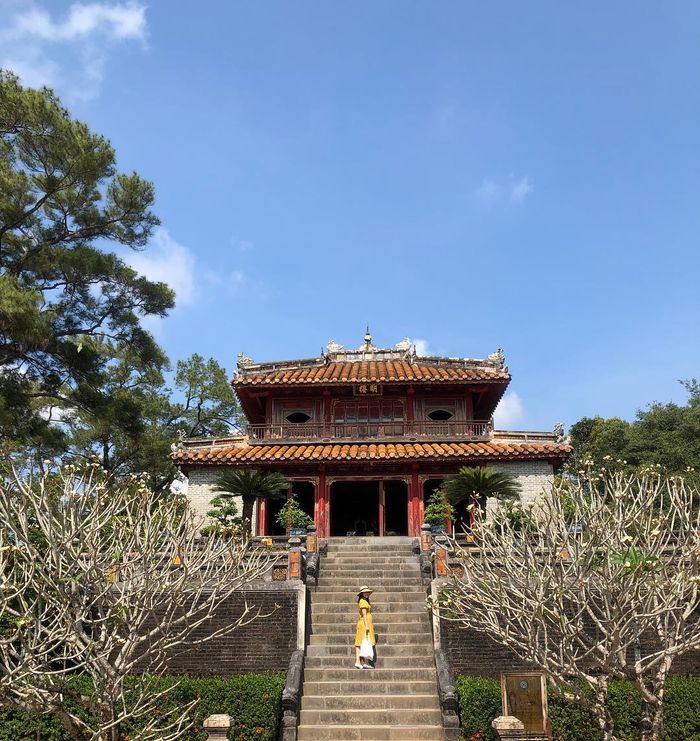
Due to its function, this place is beautifully decorated. The bright, vibrant scenery during the day is adorned with rows of trees. At night, it’s easy to admire the stars and the moon. Minh Lau Pavilion has two floors designed in a square shape. Tourists can go up to the pavilion to enjoy the view within the tomb. However, they must ensure to keep the area clean, not litter, and not disturb the artifacts present.
Thong Minh Chinh Truc Bridge
Upon arriving at Minh Mang’s Tomb in Hue, one cannot overlook the Thong Minh Chinh Truc Bridge spanning across Tan Nguyet Lake. This bridge leads you to Minh Lau Pavilion. The beauty of the lake combined with the bridge exudes an ancient architectural style, creating a harmonious and intimate connection with nature. It brings a sense of tranquility fitting for the resting place of a national leader.
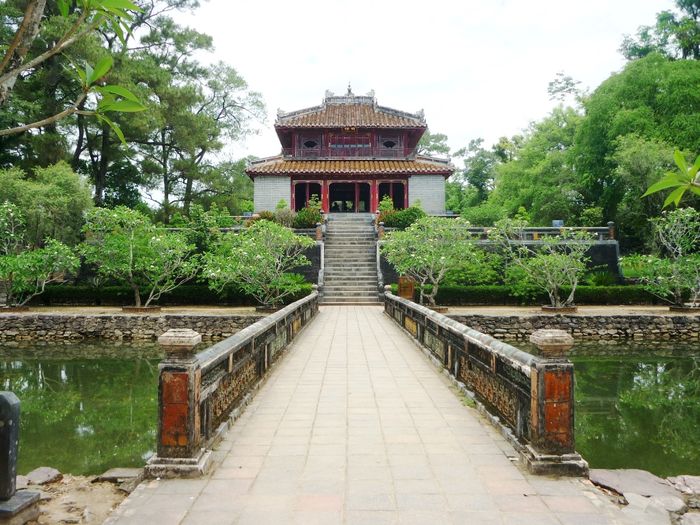
Tan Nguyet Lake
A special feature of Minh Mang’s Tomb is its clever combination with clear blue lakes, creating harmony and avoiding an overly rigid overall structure. Tan Nguyet Lake, meaning the moon embracing the sun of Buu Thanh, is also the talented king Minh Mang.
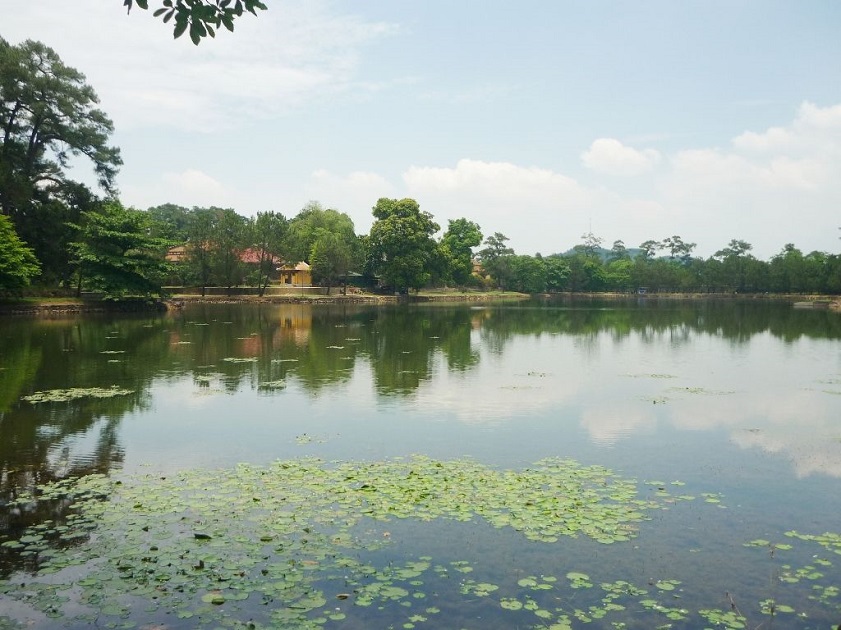
Tourist attractions near Minh Mang Tomb in Hue
Here are some tourist attractions near Minh Mang’s Tomb in Hue:
- Khai Dinh Tomb
- Address: Khai Dinh, Thuy Bang, Huong Thuy, Thua Thien Hue
- Description: Khai Dinh Tomb, also known as Ung Lang, is another royal tomb in close proximity to Minh Mang’s Tomb. It is known for its elaborate architecture, blending Eastern and Western design elements.
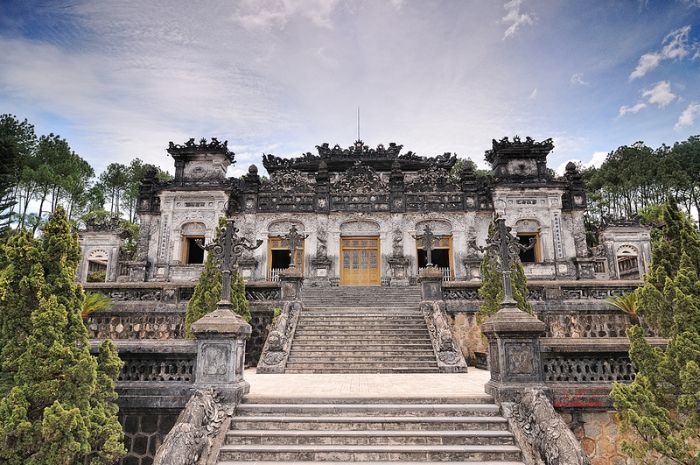
- Gia Long Tomb
- Address: Huong Tho, Huong Tra, Thua Thien Hue
- Description: Gia Long Tomb is the final resting place of Emperor Gia Long, the first emperor of the Nguyễn Dynasty. The tomb is set in a serene landscape and showcases classical Vietnamese royal tomb architecture.
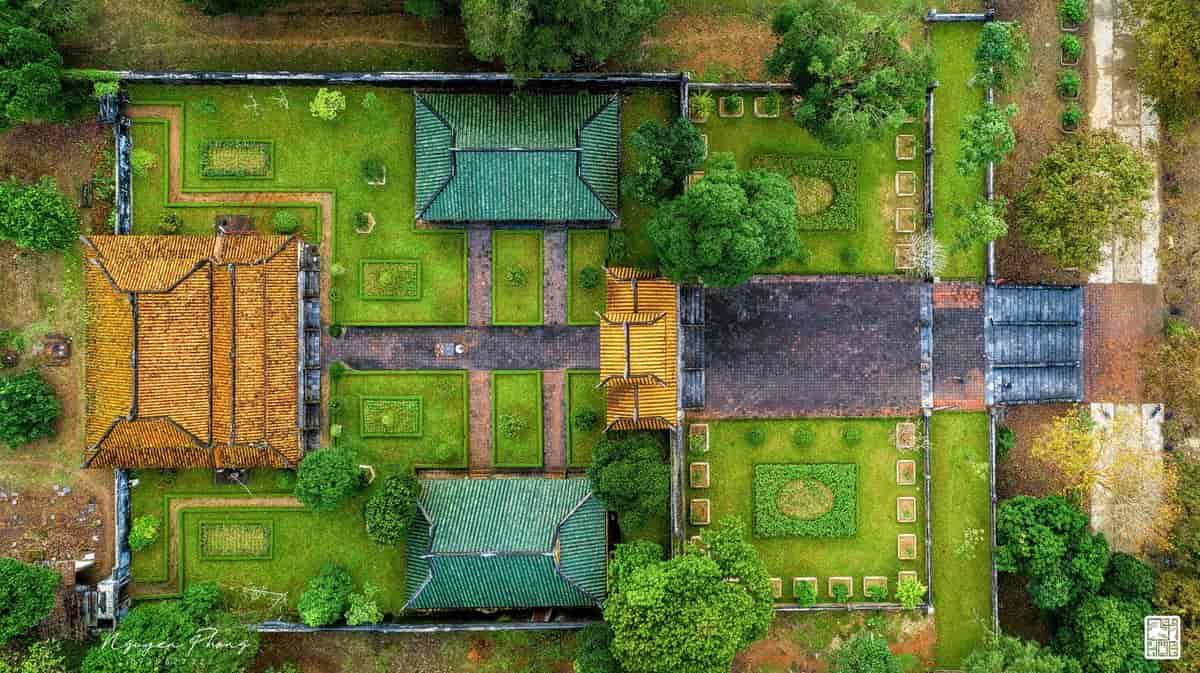
- Thieu Tri Tomb
- Address: Thuy Bang, Huong Thuy, Thua Thien Hue
- Description: Thieu Tri Tomb is dedicated to Emperor Thieu Tri, the third emperor of the Nguyen Dynasty. The tomb area features beautiful gardens, lakes, and architectural structures reflecting the style of Nguyen Dynasty tombs.
These attractions offer a glimpse into the rich history and cultural heritage of the Nguyen Dynasty in Hue. Exploring these sites will provide you with a comprehensive experience of the imperial history and architecture in the region.
What to Note When Visiting Minh Mang Tomb?
- Appropriate Attire: As this is a place of solemnity, where the tombs of the king and queen lie, it is important to dress modestly and neatly. Avoid provocative clothing, revealing attire, shorts, and see-through tops.
- Maintain Order: Minh Mang Tomb was built as a resting place for the king, so visitors should be mindful of maintaining order. Avoid loud laughter, running around, and maintain a respectful demeanor. If you disturb the tranquil atmosphere of the historical site, you may be subject to appropriate measures.
- Respect Cultural and Historical Values: The tomb of the king is not just a regular tourist destination; it is a place of worship with spiritual significance and a cultural heritage site of the nation. Therefore, when visiting, it’s crucial to respect the meaning of the monument. Do not touch artifacts, do not climb onto statues, and do not litter.
Minh Mang Tomb, with its unique architecture steeped in ancient charm, is a must-visit destination if you want to fully explore the dreamy city of Hue. Upon arriving at this location, you will feel as if you have been transported back to a glorious past, touching the ancient architectural structures with distinctive meanings inside. Make sure to include the address of Minh Mang Tomb in your travel guide when planning to explore the historic land of Hue!
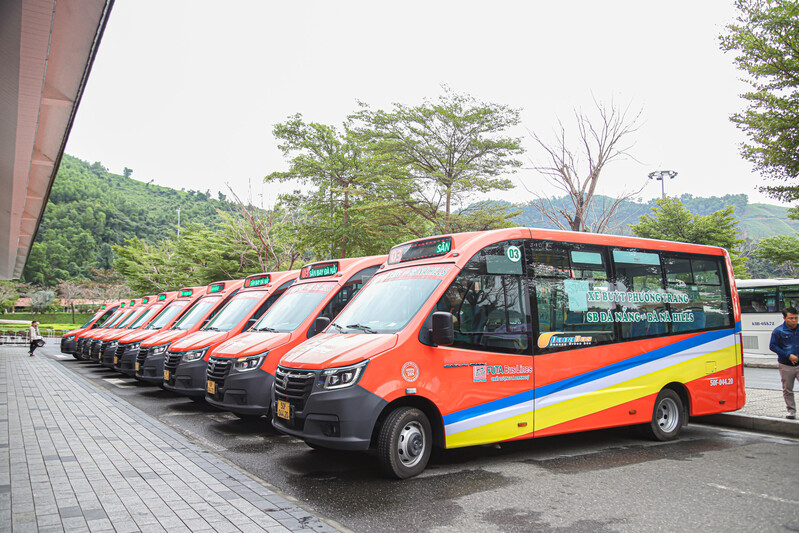
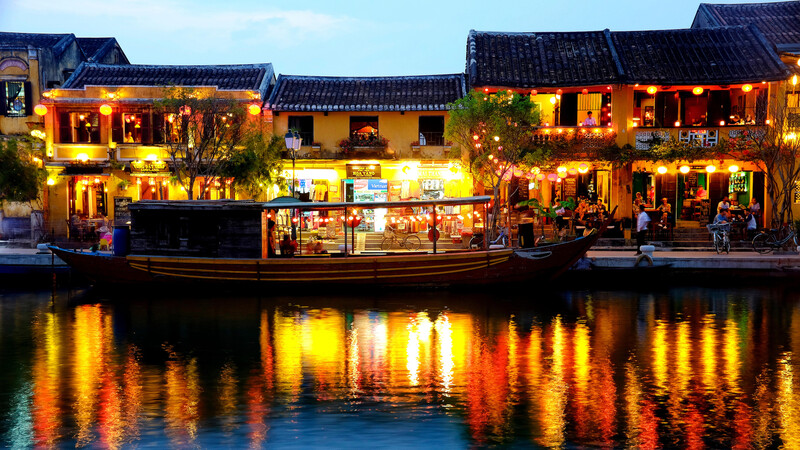
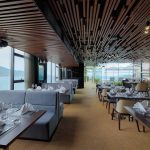
[…] layout and architecture, Minh Mang Tomb embodies a poetic blend of nature and human creativity. The tomb is surrounded by the Luu Khiem […]